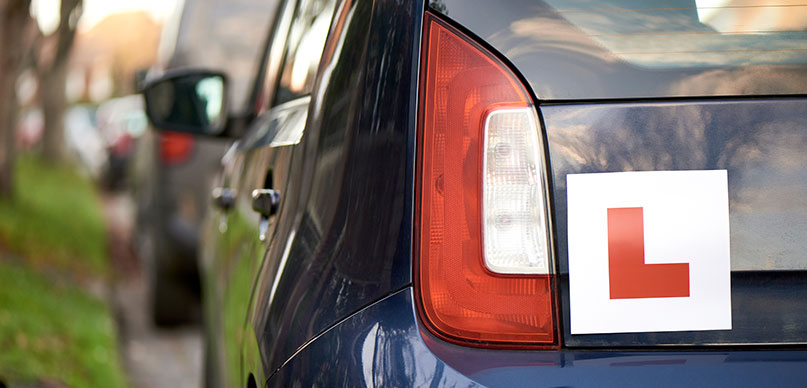
Minimum learning period proposed for learner drivers
6th May, 2021
If you’re an experienced driver, you might find that even a relatively short time behind the wheel can be enough for you to forget just how tricky and terrifying it was when you were learning the ropes. Understandably, it’s not unusual for inexperienced drivers to be more nervous and indecisive behind the wheel, which unfortunately can lead to a greater risk of accidents. (Some of them serious enough to make someone say – I need to scrap my car!)
Right now, there are very few hard and fast rules on how long someone has to have been learning before they’re able to become a fully qualified driver. As things stand, generally speaking if you’re good enough to pass the test, you’re good enough to be out on the roads. As far as the law’s concerned, it’s as simple as that.
But IAM Roadsmart, a UK leading road safety charity, has called for this to change. Following its own in-depth study, it wants the government to implement a minimum learning period before learner drivers can get out on the road and start driving. Here’s everything you should know.
What did the research find?
IAM RoadSmart recently conducted an in-depth study of over 2,000 drivers and the research found that 68% of the respondents agreed that all new drivers should have to undertake a full year’s worth of training, regardless of their age, before being allowed to take their practical test. What’s more, 65% of the participants supported the idea that drivers should be encouraged to take additional training. To be honest, this is especially encouraging given that the majority of these respondents were between the ages of 17 to 49.
This would essentially involve the UK implementing its own form of a Graduated Driver Licensing (GDL) scheme, which are already active across the globe in countries including Australia, New Zealand, Sweden, as well across areas of the USA and Canada. As you’d expect, these schemes have their fair share of proponents and detractors, but there’s no denying that they’d give learning drivers plenty of time to refine, improve and enhance their knowledge of road safety and driving. In doing so, the hope is that this would make the roads safer for all people, drivers, or pedestrians.

What does this mean going forward?
At the time of writing, the UK government has yet to make any official statement or offer their verdict on the proposal, but IAM Roadsmart certainly isn’t going to let the issue lie; the charity argues that it will be a vital step forward in making the UK’s roads safer. Neil Greig, IAM’s director of policy and research, has used the government’s own stats to bolster their argument, with official statistics which indicate that 1 in every 5 new drivers will crash their car within their first year on the road. This puts them and others at risk and, at worst, can sometimes be fatal.
With a GDL scheme in place, as well as the potential for additional lessons, there is potential to reduce the frequency of crashes from new drivers. It grants the opportunity for more extensive learning, whether that’s the basics or small intricacies that can help mitigate the risk of hazardous driving. What’s more, the fact that many younger drivers agree suggests that they’d also appreciate the extra time to learn the ins and outs of their vehicle, and the rules on the road. There’s also the climate to consider; a year-long period allows new drivers the opportunity to hit the roads in all kinds of weather, including the more extreme ones such as snow or heatwaves.
Might be one worth keeping an eye on, especially if you’ve got any younger aspiring drivers in the house, angling for their first set of wheels! We can tell you one thing, though – whatever happens, you can always rely on us right here at Scrap Car Network to get you the very best price when you scrap your car.
All you need to do is enter your car reg and postcode into the fields on our site, and we’ll get you an instant online quote before you can say cash for cars. It only takes a few seconds. Curious to find out how much your car is worth?